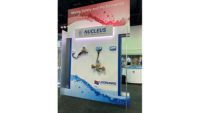When reviewing the proposed changes to the International Mechanical Code and International Fuel Gas Code, I must quote Yogi Berra.
“It’s déjà vu all over again.”
As a young child I sometimes walked to 6:30 a.m. mass at Our Lady of Mercy church in New Jersey just to see Berra standing in the back of the church. Eventually, Berra moved away.
The “all over again” are code changes related to plenums and combustion equipment. There are a number of proposed code changes that look the same as the last cycle or the cycle before that.
A perennial favorite is a change that would prohibit unvented room heaters from being installed in new dwelling units. This always catches the ire of the unvented gas fireplace folks. Rightly so, they have argued, tested and published all the data on unvented gas fireplaces. Yet, each cycle, the same code change appears.
The unvented appliance change is proposed to the fuel-gas code, mechanical code and residential code’s mechanical section. That means the audience gets to hear the same testimony three times since there are three different committees hearing each code change.
The plenum code changes relate to the allowable material that can be exposed in a plenum. If you read this change and listen to the testimony, you would never install a plenum because you are going to kill people. At least that is the way plenums always seem to be described. In the end, the plenum discussion simply is a materials battle pitting one group against another.
To add or not add
ASHRAE proposed a code change to both the mechanical and the plumbing codes to require water piping systems to comply with ASHRAE 188. This also is a repeat code change. However, this time the change was submitted by ASHRAE, the promulgator of the standard. It’s a risk management standard for preventing Legionnaire’s disease.
If ASHRAE 188 is adopted, it will have a serious impact on the design of any water piping system. That is perhaps the biggest concern. One of the recommendations in the standard is a limitation on the length of piping containing stagnant water. If interpreted to the fullest, you would not be permitted to install any future water piping. The response is that you could add to the system provided you valved-off the future piping.
Some of the other concerns expressed in the past is that ASHRAE 188 always assumes there could be Legionella pneumophilia bacteria in the water supply. Of course, that is not the case for many public and private water supplies. So, if the bacteria are not in the water, why do you have to design a system as if it is in the water? I look forward to listening to the discussions, pros and cons regarding the reference to ASHRAE 188.
Many of the changes to the hydronic piping systems relate to material requirements. New pipe or fitting standards and new joining methods are being proposed.
In the plumbing code, there is a shocker of a code change that proposes to remove galvanized steel pipe as an acceptable water piping material. The oldest plumbing code I have in my office dates to the 1920s. Galvanized steel pipe is listed as an acceptable material in that code. It would be safe to say we have been using the material for nearly 100 years. What has changed?
The reason given for removing galvanized steel pipe is it corrodes and causes water-quality issues in potable water supplies. My immediate thought is all metal pipes corrode, so do we remove all metal pipes for potable water systems? However, plastic pipe degrades. Do we remove all plastic pipe because it degrades?
Other plumbing changes
While most of the drainage proposed changes relate to material, there is a proposal to require all connections to a building drain to be on the vertical. This means rolled up on a 45° angle or greater. A horizontal connection would not be permitted. This would significantly change plumbing design. It also would result in a lower building drain to allow the vertical connections. The justification for requiring vertical connections is the reduced amount of water in the drain and preventing the reversal of flow in the horizontal connections.
The PAPA is proposed for inclusion in the venting chapter. PAPA stands for positive air pressure attenuation device. It originally was developed for use with air-admittance valves in tall buildings. The best way to describe its application is a large water hammer arrestor for a drainage stack.
The code change refers to the design by the term used in the standard, positive pressure reduction device. The problem with the code change is it does not provide guidelines as to how it is used, why it is used or where it is used. The change simply directs you to follow the manufacturer’s installation instructions. The PAPA always has been allowed to be included as a part of an engineered vent design.
A unique plumbing change would require a personal hygiene device for every accessible (handicapped) water closet. Having done a fair amount of international travel, personal hygiene devices are common in many public toilet rooms in other countries. In the U.S., they are rare. In many ways, it makes sense to accommodate the physically challenged by making it easier to clean after using the water closet. The justification also addresses the elderly. The change could result in a changing attitude in the U.S., in providing more bidets or personal hygiene devices on water closets.
By the time you read this, the first ICC hearings in Columbus, Ohio, will probably be over. The tightness in the schedule between publication of the code-change monograph and the holding of the first hearings is short. There are just more than six weeks in which you need to read the code changes and prepare to testify at the hearings. As a result, most of the discussion is controlled by seasoned professionals in the code and standards business.
You can download the complete monograph and the hearing results at www.cdpaccess.com. The next step is the public comment period. If you are opposed to any initial recommendation on a code change, you can file a public comment. Public comments are due by July 16.
Next up is the IAPMO Technical Committee meetings for reviewing changes to the 2021 Uniform Plumbing Code and 2021 Uniform Mechanical Code.




